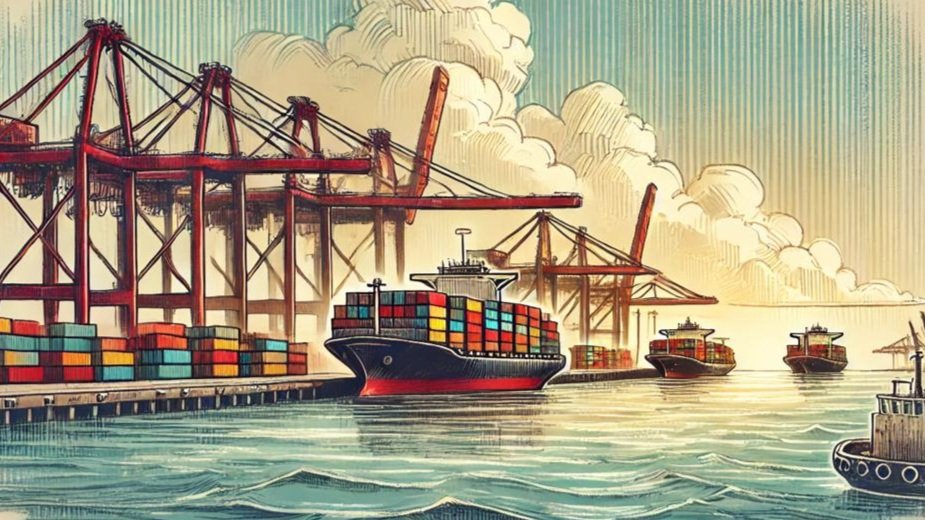North America monthly reader - September 2024
North America eyes season of strikes
Introduction
Welcome back to our monthly reader after our August hiatus. We have once again divided our discussion into topical highlights. If you are interested in digging deeper into the details and getting a more complete view of these issues, or exploring other subjects, please feel free to reach out to our team directly.
Highlight 1: Carriers Await Signals for Action
Both the East and West Coast are operating under the uneasy threat of simultaneous strike action that threatens a swath of major ports on the North American continent. One question we frequently receive is how we are seeing this play out in both short and long term schedules communicated by carriers.
While the recent rail strike in Canada was short-lived, the lead up was long and arduous. We did see a flurry of port swaps (i.e. vessels heading to Seattle in lieu of Vancouver) preceding and during the week of the 24 hour work stoppage on August 22nd. There were a total of 19 completed swaps in the month of August alone, and 3 that are still active. There were also 3 vessels observed speeding up and in order to make the cut-off before 0h00 on the morning of the strike but failed. They ultimately joined the ranks of those that had to inch their delayed arrivals back day-by-day while port operators and carriers alike fought for visibility. Operations did bounce back relatively quickly but the uncertainty remains - blank sailings doubled into Vancouver from a total of 6 in August to 12 in September. Prince Rupert also bore 5 blank sailings in August, an uptick from the standard 2-3 per month that it has seen on average in 2024.
Historically we have observed that the anticipation of a strike alone has the potential to cause a loss in volume and berth planning difficulties for targeted ports. Earlier this year in May, speculations of an imminent rail strike in Canada were once again at a peak and the following 2 month period was characterized by an influx of short and long-week port swaps into Seattle and Tacoma, preemptive omissions into Vancouver on the OCEAN - PSW2 service, and an uptick in blank sailings.
All eyes are now focused on the East Coast, where carriers are yet to take significant strategic action but are no doubt weighing the options by the day. While the presence of blanks is undeniable across many East Coast services in the weeks ahead, there is no sizable pattern that can confidently be assigned to a dedicated avoidance of possible strike actions. Given the persistent schedule reliability issues already surrounding services routing past the Cape of Good Hope, it will be interesting to see which of these, if any, bear a particularly heavy loss in capacity if the strikes do actualize and how changes to service structure or vessel assignments may take shape.
Highlight 2: Ports Troubled by Association
While ports that are in the immediate line of sight for issues like strikes or political unrest are often at the forefront of our minds, their geographic neighbors and succeeding ports along the rotation of affected services often bear the weight of these troubles as well.
Tacoma, and notably Husky Terminal, has been singled out for particularly bad delays on The Alliance’s PN services these past many weeks and is an example of a port caught in a snowball effect. While rail shortages did contribute to delays on the port operations side - existing delays were significantly exacerbated by a steady stream of port swaps from vessels attempting to avoid congestion and delays in Vancouver. A slew of upcoming slot rearrangements on these PN services, combined with strategic blanks as well as inducement calls into Seattle, are expected to give some relief to the situation in the long weeks ahead. We expect to see a significant decrease in delays by mid-October. Average congestion has already dropped drastically since its peak in w33 at 46% and is drawing an inverse pattern against congestion in Vancouver which is now again on the rise.
Along the East Coast, ports that share a spot on the rotation of Red Sea impacted services like The Alliance’s EC5, exhibit a mixed bag of symptoms. While Halifax has indeed suffered extreme delays from vessels on this service and functions as both the first port of discharge and last load port in North America for the EC5, its average schedule reliability over the past two months has increased positively. Charleston on the other hand, is suffering both from a severe uptick in congestion since w34, and continues to maintain an average monthly schedule reliability below -6 days of delay.
Perhaps it’s the relative share of services utilizing the South African passage that determines the scale of the effect: Charleston’s share of services sailing past the Cape of Good Hope stands at a whopping 48%, while Halifax has 12% of her total services affected. A massive neighbor like New York/NJ is at 36% with no changes to its usual congestion patterns and an average 12 hour improvement in schedule reliability since July. Another large neighbor for comparison, Savannah, has a 40% share of Red Sea impacted services and has seen a 12hr decline in average schedule reliability since the start of July, along with her characteristic ups and downs in congestion.
Regardless of the scale of relative impact, the dangerous seasonal weather conditions surrounding the Cape this time of year have only served to increase existing delays on these routes over the past three weeks.
Highlight 3: Golden Week Around the Corner
Golden Week is just around the corner and we are starting to see the first confirmations of the blank sailings expected during the month of October.
Vancouver and Prince Rupert currently have 11 blanks combined slated for October with the majority allocated to Vancouver. Unfortunately, it’s quite possible that Vancouver’s expected blanks will reach higher peaks than usual during this season due to ongoing strike concerns.
There is a visible uptick in Los Angeles and Long Beach as well. In Long Beach, 4% of total calls were allocated as blank sailings in the past eight weeks; that has risen to 5% in the current forecasting period through w43 with a total of 9 blanks. In Los Angeles the previous eight week period saw an increase from 5.2% of total calls up to 7.2% through w43 with a total of 16 blanks.
Maersk Line and MSC both published announcements on August 26th reflecting the planned drop in capacity during Golden Week. Notable East Coast services affected include 2M’s ECNA Suez Loop and the ECNA RTW loop with just 3 blank sailings confirmed so far. We expect to see more blanks announced through the two week period ahead.
Our team plans to release the next iteration of our newsletter in early October.
Kind regards,
Destine

